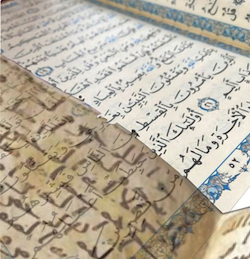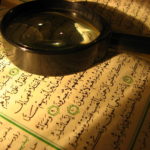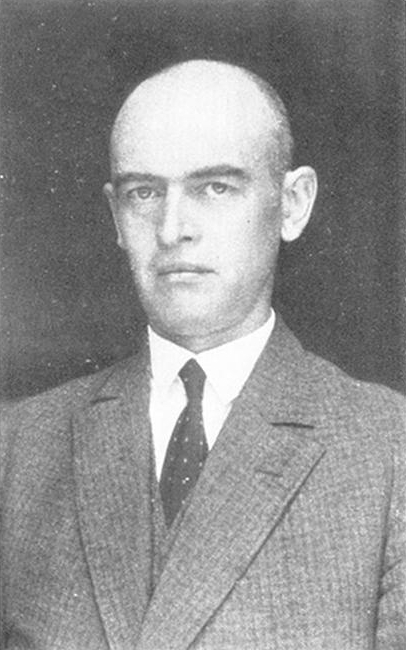
The Cairo text is often at odds with manuscript evidence.[1] This may have been expected, since the Cairo project was not so much about text restoration so much as text selection. Indeed, the very idea of legal readings is based on religious doctrine, not on textual criticism.
BY JADOU JIBRIL
IN THE CASE OF readings, discussion about the form of the Qur’ānic text ought to be conducted in the context of the traditions of society. The claim to the authenticity of the Egyptian edition is not based on its antiquity, but on its canonicity.
For this reason the Egyptian Qur’ān – as a maṣḥaf – should not be confused with a critical edition. Egyptian scholars in no way sought to catalogue the canonical differences in their texts, let alone the non-canonical differences that can be found in the manuscripts.
Nevertheless, shortly afterwards two Western scholars, both of them friends and colleagues, took on the task: Bergsträsser, a German, and Arthur Jeffery, an Australian. Bergsträsser, a professor at the University of Munich, was a pupil of August Fischer in Leipzig and was already known for his follow-up to Nöldeke/Schwally’s History of the Qur’ān and for his various contributions to Semitic linguistics. Jeffery, a Methodist pastor, was a professor at the American University in Cairo, although in 1938 he was to transfer to Columbia University in New York. He later went on to publish the seminal study on the origins of Qur’ānic terms The Foreign Vocabulary of the Qur’ān.[2]
The Egyptian Qur’ān – as a maṣḥaf – should not be confused with a critical edition
At the time, however, Bergsträsser and Jeffrey were busy studying the literature on the readings, photographing early Qur’ānic manuscripts and planning for the eventual publication of a critical edition.[3] A summary of Bergsträsser’s presentation at the Sixth German Orientalist Congress (Vienna, 1930) detailed their plan:
The speaker then proposed the creation of a critical project on the Egyptian edition in collaboration with Professor Jeffery, covering everything in the literature (especially readings and commentaries) and the Kufic Qur’ānic manuscript texts (which have been widely used for this purpose).
– The range of materials to be photographed, the verifiable variations and readings (omitting the merely phonetic differences) that the copies present and listed according to divergences in the consonants within the ‘Uthmānī text, the potential pronunciations of this text with its divergent readings, with the aim of seeking to evaluate them critically, highlighting those divergencies from the accepted text that deserve special attention or are to be preferred to it.
The entire material should be available with an index of words and grammatical and factual overviews.[4]
After a discussion of the idea carried out by Fisher, Baumstark, Ritter, and Callie, the scientific group agreed to the following joint statement:
In Vienna in 1930 German orientalists have welcomed Mr. Bergsträsser’s plan to create a critical project for the Qur’ān, declaring that its implementation represents an urgent need in the study of the Levant. In particular, they declared the need to put together a collection of photographs of ancient Qur’ānic manuscripts for this purpose.[5]
Incidentally, it can reasonably be speculated that this idea of a critical edition project was actually inspired by Egypt, as both Bergsträsser and Jeffery were active in Egypt during the period in which the Cairo text was produced. They believed that this was a noteworthy case of collaboration between Muslim and Western scholars, despite the methodological differences they adopted.
However, the draft critical edition was eventually abandoned due to a series of unusual, even ill-founded, events that are scarcely believable. In August 1933, Bergsträsser died while hiking with a companion in the Alps.
His companion, Friedrich Thiersch, gave an account of Bergsträsser’s death in a 16-page written statement prepared for the police immediately after the event. After his statement, Friedrich Thiersch mentions in a book entitled Mein Kopf ist noch völlig durcheinander (‘My head is still completely messed up’) that during the excursion Bergsträsser fell down a steep slope, injuring his head. Thiersch continues, in an emotional tone, that since he could not carry the professor by himself, he stayed with him on the mountain over the cold night during which Bergsträsser died.

Suggested Reading
But Thiersch’s account of the death of Bergsträsser did not go unchallenged. An Egyptian scholar named Muḥammad Ḥamdī al-Bakrī, in the preface to his book on Bergsträsser’s linguistic works, concludes that the professor was killed because of his attitude, which was considered to impugn the Muslim holy book.
Al-Bakrī dramatically describes how one of his students attacked Bergsträsser during the hiking trip, grabbing him and throwing him off a cliff.[6] Al-Bakrī unfortunately did not provide any evidence for his account of Bergsträsser’s death. At the same time, Al-Bakrī story contradicts Günther Lüling’s claims that the Munich School of Islamic Studies collaborated with the National Socialists, although Lüling also provided no evidence for his assertions.[7] It seems that the death of Bergsträsser will remain a mystery until the emergence of yet to be revealed evidence.
[1] Bergsträsser, قراءة القرآن الكريم في القاهرة , p.32.
[2] See this work in the Almuslih Library here.
[3] See J. Bergsträsser, Plan eines Apparatus Criticus zum Koran (‘Plan for an Apparatus Criticus for the Qur’ān’), Proceedings of the Bavarian Academy of Sciences, January 1930, vol. 7, 3 ff. Reprinted in Qur’an, Research MethodsVol. 97, pp.326-389. See ‘On the necessity and possibility of issuing a critical edition of the Qur’ān’, ZDMG 84, 1930, 82–3.
[4] J. Bergsträsser, ‘On the Necessity and Possibility of a Critical Edition of the Qur’ān’.
[5] J. Bergsträsser, ‘On the Necessity and Possibility of a Critical Edition of the Qur’ān’, p.8. )In this context, an orientalist has photographed the manuscripts of Ṣan‘ā’ immediately following their discovery).
[6] See Muḥammad Ḥamdi al-Bakrī, The Origins of Text Criticism and Book Publishing, The Civilization of the German Orient, Bergsträsser, Cairo: Dar al-Kutub Press, 1969. Bergsträsser was a guest professor at the University of Alexandria. Cairo during the academic year 1931/1932. This book may be read here.
[7] G. Lüling comments: “Despite the horror of the matter, German Arabists and Islamists, generally called ‘The Fuqahā’ of Semitic languages’, were particularly vulnerable to the politics of the Third Reich. See ‘Scientific Critique of the Qur’an,’ Journal of Higher Criticism 3, Spring 1996, 1, 79. Lüling goes on to describe his research into the Nazi files of German Semitism which, according to his account, he was allowed to access on the Internet on the condition that the names of those associated with this system would be deleted. “Almost everyone was involved” he comments (p.80), and he gives the names of only two researchers who were not involved: Walther Braune and Hans Heinrich Schaeder, both from Berlin. Meanwhile, Lüling (p. 95) describes Anton Spitaler of Munich as a ‘pseudonym’ for Nöldeke, a scholar whom Lüling accuses of anti-Semitism (p. 78).
See Part One of this essay here

